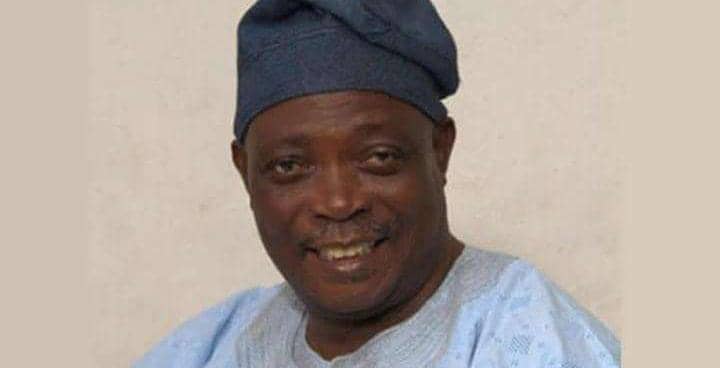Intense lobbying is underway to persuade former Oyo State Governor and Otun Olubadan of Ibadanland, High Chief Rashidi Ladoja, to accept the beaded crown, as dictated for his status in the revised Olubadan Chieftaincy Declaration.
The move is seen by many as essential to de-escalate tensions over the noise generated by the publication of the gazette showing the new amendment.
The Oyo State government, in the new Olubadan Chieftaincy Declaration, passed by the state House of Assembly and signed into law by Governor Seyi Makinde, revised Section 4 of the 1957 Olubadan Chieftaincy Declaration.
The original version stated: “The person who may be proposed as a candidate by the line whose turn it is to fill a vacancy in the office of the Olubadan shall be the most Senior (High) Chief in that Line.”
However, Section 4 of the amendment, titled “New Olubadan Chieftaincy Declaration,” replaced “the most Senior (High) Chief in that Line” with “the most Senior Beaded Crown Oba in that Line.”
Section 4 of the new law states: “The person who may be proposed as a candidate by the Line whose turn it is to fill a vacancy in the office of the Olubadan shall be the most Senior Beaded Crown Oba in that Line.”
Ladoja, who is the most senior of the High Chiefs and whose line it is to produce the next Olubadan, has not accepted the beaded crown.
Despite Ladoja’s public stance of only wanting the Olubadan crown, prominent community leaders and legal experts argued that his acceptance would stabilise the succession system and benefit Ibadanland.
The move, The PUNCH gathered, was to de-escalate the tension generated by the controversial release of the government gazette.
Movements of people was observed in and out of Ladoja’s private residence in Ondo Street, Bodija, Ibadan, the state capital on Sunday.
Two senior chiefs from Otun Olubadan and Balogun lines, who did not want their names in print, said “Although they did not subscribe to Governor Seyi Makinde’s interference in Olubadan’s succession system, rejecting the beaded crown by Ladoja as the next in line to the Olubadan, Oba Owolabi Olakulehin, with no court process in place, might create a yawning gap in Ibadan succession system, and ultimately do harm to Ibadanland.”
One of the Mogajis who spoke with The PUNCH said, “Let me appeal to the Otun Olubadan to accept the crown.
“As Mogajis, we are too junior to accuse our fathers in the rank of crown-wearing High Chiefs of not doing well. They will heave a sigh of relief once Ladoja accepts the crown because they perceive that people calling them carton crown-wearing monarchs are doing so because of Ladoja and will henceforth call them correct monarchs once he accepts the crown.
“Ladoja enjoyed enormous goodwill, having done Ibadanland some good and saved it from different chieftaincy crises from the times of Oba Odulana Odugade (2007-2016), through Oba Saliu Adetunji, Aje Ogunguniso1 (2016-2022), Oba Mohood Balogun (2022-2024) and the reigning Oba Owolabi Olakulehin.
“Why should we now put roadblocks in his way when he did not supplant his seniors and a reigning monarch is in place?”
Some prominent sons and daughters of Ibadanland, alongside indigenous lawyers and Senior Advocates of Nigeria, however, insisted that some fundamental legal issues would have to be addressed in the new chieftaincy law.
Efforts to get Ladoja’s reaction to the unfolding developments failed, as his media aide, Adeola Oloko, did not pick up calls put through to his telephone as of press time.
Meanwhile, a former Chairman of the All Progressives Congress in South Africa, Bola Babarinde, has appealed to Makinde not to allow the disruption of the Olubadan succession arrangement.
Babarinde, in a statement made available to the News Agency of Nigeria on Sunday, said the Ibadan traditional system, which had thrived for over two centuries, should be allowed to remain intact.
According to him, any attempt to alter the succession arrangement could undermine the peace and progress of the state.
Babarinde, a great-grandson of Odetilo, the late warrior king of Ibadanland, noted that Ibadan’s chieftaincy system stood out for its non-hereditary and egalitarian structure.
A descendant of Ojo Kure of Oja’ba in Ibadan, Babarinde said at the twilight of former Governor Abiola Ajimobi’s administration, the chieftaincy system faced significant changes.
He said that the promotion of Ibadan High Chiefs after the passing of Oba Adetunji in 2016 brought the succession arrangement into sharp focus.
Babarinde said that the attempt by Ajimobi to review and alter the traditional order sparked widespread debate and concerns, noting that the perceived involvement of Makinde in Ibadan obaship succession matters was creating mixed feelings among the indigenes.
“The traditional system of Oluyole Ibadan, which has thrived for over two centuries, should remain intact. Any attempts to alter this system could undermine the peace and progress of the region.
“The administration of Governor Makinde is advised to honour and respect the traditional institution of Ibadanland, avoiding actions that could provoke the ire of the people,” he added.
According to him, the alleged involvement of the governor in the installation of the Soun of Ogbomoso and the ongoing selection of Alaafin of Oyo had created fear in the minds of the indigenes that his action could further complicate the Ibadan monarchy system.
Babarinde said the alleged involvement of the governor in the traditional matters might prevent a rightful heir to Ibadan obaship, such as a former governor of the state, Ladoja, from ascending the throne.
“The Ibadan monarchy is a testament to a sophisticated and democratic system of succession.
“As the city moves forward, it is vital to preserve this unique heritage and ensure that political interests do not overshadow the traditional values that have brought prosperity and stability to Ibadan.
“Governor Makinde is urged to exercise his executive powers judiciously and avoid actions driven by political vendetta.
“I equally appeal to the governor to respect traditional institutions in the state,” he said.
Punch






Leave a Reply